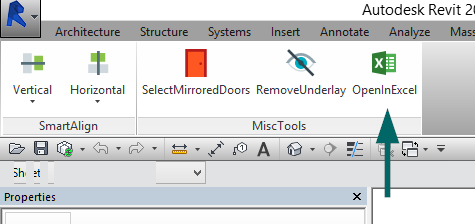Boost Your Operations with Effective Revit Add Ins
Excel-to-Revit: A Game-Changing Operations for Architectural Style - Introducing the Tricks
Presenting excel-to-revit, the game-changing process that will revolutionize your layout procedure. With excel-to-revit integration, you can improve your building design, unlock performance, and take full advantage of cooperation within your group. Get prepared to take your building design to the following degree with excel-to-revit!
The Power of Excel-to-Revit Assimilation

Visualize the ease of having the ability to modify and upgrade task data in Excel, and promptly see those adjustments shown in your Revit version. Say goodbye to hands-on data entry or laborious updates. With Excel-to-Revit integration, you can conserve time and lower mistakes by leveraging the power of Excel's formulas and functions to instantly produce accurate data in Revit.
Not just does this integration improve efficiency, but it additionally boosts collaboration among staff member. You can easily share Excel documents with associates, who can after that import the information right into their Revit models. This advertises a seamless exchange of details and guarantees that everybody is dealing with one of the most up-to-date information.

Improving Building Design With Excel-To-Revit
Streamlining architectural design is simplified with using Excel-to-Revit (revit tools). With this powerful combination, you can enhance your process and conserve beneficial time throughout the layout process. By leveraging the abilities of Excel and Revit, you can flawlessly transfer data in between the 2 systems, getting rid of the demand for hand-operated data entry and decreasing the risk of errors
Excel-to-Revit allows you to import and export information effortlessly, enabling you to quickly update and modify your building designs. You can create timetables, determine amounts, and produce reports in Excel, and afterwards move that information directly into your Revit version. This integration makes sure that your design information is constantly current and synchronized, removing the demand for hand-operated updates and minimizing the possibilities of variances.
By utilizing Excel-to-Revit, you can likewise take advantage of the effective computational capabilities of Excel. You can perform intricate calculations, examine data, and automate recurring jobs, all within Excel. After that, with just a couple of clicks, you can import the outcomes back into Revit, enabling you to make educated layout choices and maximize your architectural layouts.
Unlocking Efficiency: Checking Out the Excel-to-Revit Operations
Maximize your performance by effortlessly integrating Excel and Revit for a more efficient operations. With the Excel-to-Revit process, you can unlock a whole brand-new degree of effectiveness in your building layout procedure. By using the power of Excel's information monitoring capabilities and integrating it with the versatility and precision of Revit, you can enhance your layout procedure and conserve useful time.
Among the vital benefits of this combination is the capability to import and export information between Excel and Revit. This suggests that you can conveniently transfer project info, such as room routines or product quantities, from one software application to the other, getting rid of the need for hands-on data access and reducing the opportunities of errors. You can also create customized solutions and estimations in Excel to automate repeated jobs and perform complicated calculations, which can after that be flawlessly integrated into your Revit models.
In Addition, the Excel-to-Revit operations permits far better sychronisation and cooperation in between staff member. With Excel serving as a central information center, several team members can service different facets of the task all at once, sharing and upgrading information in real-time. This not only improves communication however additionally ensures that everyone is collaborating with one of the most current data, eliminating the danger of variances.
Making The Most Of Collaboration: Excel-to-Revit for Architectural Teams
By seamlessly incorporating Continued Excel and Revit, building teams can substantially boost collaboration and accomplish extra efficient style end results. When using this powerful workflow, you can easily move data in between Excel spreadsheets and Revit designs, improving the design procedure and boosting communication among group members.
Furthermore, by leveraging Excel's effective estimation capabilities, you can perform intricate computations and evaluation on your style data, driving and supplying useful insights informed decision-making. This assimilation additionally enables you to export information from Revit to Excel, enabling you to create comprehensive reports, graphes, and charts for presentations and analysis. This collaborative operations promotes reliable communication and coordination among employee, as Excel functions as a central center for information management and sharing.
General, by embracing the Excel-to-Revit process, architectural groups can accomplish higher degrees of partnership, performance, and accuracy in their design procedure. revit plugins. This combination empowers groups to work together seamlessly, guaranteeing that everybody is on the very same web page and adding to the success of the task
Introducing the Tricks of Excel-to-Revit Assimilation

One of the secrets of Excel-to-Revit integration is the capability to take advantage of the power of formulas and computations in Excel to drive parameters and generate complex geometries in Revit. You can connect Excel spread sheets to Revit families, permitting you to input data directly into the spread sheet and have it immediately update in the Revit model. This simplifies the layout process and makes certain accuracy and consistency across the project.
Another key is the capability to produce customized schedules and reports in Excel, making use of data extracted from Revit. This allows you to imagine and examine job details Recommended Site in a means that is not possible within Revit alone. You can easily generate amount take-offs, price estimates, and task timelines, giving valuable understandings for decision-making and project monitoring.
Additionally, Excel-to-Revit assimilation allows reliable collaboration amongst team members. Multiple individuals can service the exact same Excel spreadsheet simultaneously, making it less complicated to work with and track changes. You can likewise make use of Excel's commenting function to offer comments or communicate design modifications.
Conclusion
By integrating the power of Excel and Revit, engineers can now function much more efficiently, save time, and create better layouts. read what he said Beginning including excel-to-revit assimilation right into your architectural style procedure today and change the means you function.
With just a couple of clicks, you can import the outcomes back into Revit, allowing you to make enlightened design decisions and enhance your building layouts.
By utilizing the power of Excel's data management capacities and combining it with the versatility and accuracy of Revit, you can streamline your layout process and conserve valuable time.
By effortlessly incorporating Excel and Revit, architectural groups can greatly enhance collaboration and accomplish extra efficient layout results. When utilizing this effective process, you can easily transfer information in between Excel spreadsheets and Revit models, enhancing the design process and enhancing communication amongst team members.Furthermore, by leveraging Excel's effective estimation capacities, you can execute complex estimations and evaluation on your design information, giving beneficial insights and driving informed decision-making.